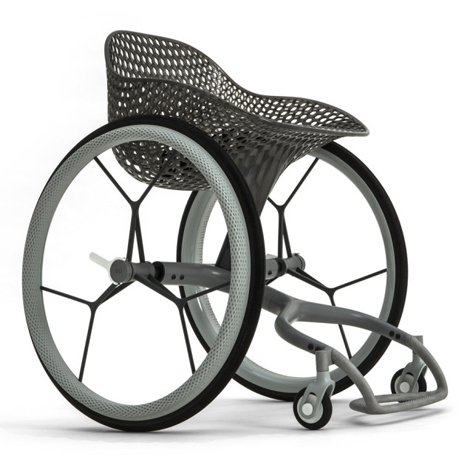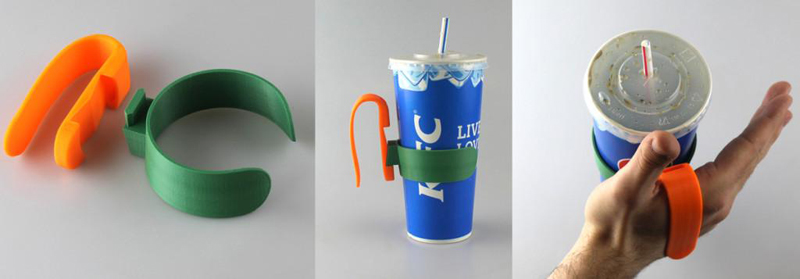For years, disability equipment has been very expensive and very impractical. It’s been hard to create equipment that works for everyone that businesses will find cost-effective to sell. The result, as many will know, is that wheelchairs, prosthetics and braces have all been very expensive, bulky and uncomfortable.
However, all of this could soon be a thing of the past. The advent of 3D printing means that more tailored and customizable disability equipment could soon be widely available at much lower costs. So we’re looking at ways that 3D printing could help people in the future, as well as some more innovative ways that 3D printing is already helping out across the globe.
What is 3D Printing?
3D Printing, sometimes called additive manufacturing, is the process of making a three dimensional object from a digital file.
In order to create a 3D object, each object is split into 2D slices that are layered up to create the 3D object. Each successive layer builds the object up into a three dimensional object.
3D Printed Wheelchairs
The first ever 3D-printed wheelchair was debuted at Clerkenwell Design Week 2016. Layer, a design agency based in East London, debuted the Go wheelchair – a made to measure wheelchair that is 3D-printed.
Typically, most wheelchairs come with minimal measurements taken into account – width being the primary one. However, in the case of a 3D-printed wheelchair, your entire body can be scanned so that all your needs are taken into account. This information is then used to make a seat that is designed to support your body in every way.
This means no more uncomfortable, ugly wheelchairs. Instead, you’d be looking at a wheelchair that is designed to fit around you and complement you in every way.
Get a FREE Brochure
Simply complete our form to see a full range of bathing solutions & their key features. It takes no time at all!
Layer are not the only company that are looking to make inroads with 3D-printed wheelchairs. Motivation, who are partly funded by the philanthropic arm of Google – Google.org, also recently undertook a 24 month project to develop and test a model for printing customized postural support devices.

As with the Go wheelchair, Motivation are looking to make wheelchairs more adapted and fitted to the particular needs of the wheelchair user. Motivation have also released modifiable CAD files that anyone can access and use in order to 3D print wherever they are, instead of waiting weeks for a container to be shipped overseas.
All of this means that Motivation can reduce the waiting times and storage needs of wheelchair production in order to produce more cost-effective wheelchairs that are better for users.
Other 3D Printed Advancements
Wheelchairs aren’t the only area that 3D printing has helped make more advancements. UNYQ are a company based in the United States that offer personalised non-invasive orthopaedic devices to improve the quality of life for people suffering with different disabilities.
UNYQ released a design for a lightweight, breathable and fashionable brace for people that suffer with scoliosis. This new brace is 3D printed, and was designed specifically with young girls in mind.

“Young girls, however, are eight times more likely to progress to a curve magnitude that requires treatment.” Said UNYQ, in a statement. Young girls can be especially self-conscious about their appearance, so it was important to UNYQ to create a brace that was more discrete.
By using a 3D printer to create the brace, UNYQ were able to create a lattice structure that used 75 percent less material than previous braces – creating a more lightweight and discrete brace. The brace is even embedded with data-capture modules, developed by Intel, which allow users to monitor their progress via an app.
Smaller improvements
However, not everything has to be a total innovation when it comes to 3D Printing. Some things can be as simple as a 3D-printed cup holder. Even the simplest of additions to an able bodied person can be life changing
However, not everything has to be a total innovation when it comes to 3D Printing. Some things can be as simple as a 3D-printed cup holder. Even the simplest of additions to an able bodied person can be life changing to someone with a disability.

3D-printable designs for devices like the Paper Cup Holder, Pen Holder or Fork and Spoon Support can be revolutionary for people who suffer with limited control of their hands, for example people with arthritis. The benefits of devices being 3D printed are they can be instantly customized to suit the person using them. Width, height and thickness can all be changed, as can the material used to create them – right down to the colour used.

3D printing means that devices don’t necessarily have to be mass marketed to everyone in order to be affordable. More and more accessibility devices will become more affordable, more practical and more widely available. The practicalities of 3D printing are almost limitless, and we’re sure we’ll begin to see many more improvements over the coming years.
If you’re looking for even more examples of 3D printed devices that you can use at home, check out this post on the top 10 devices for the disabled over on 3d print.






